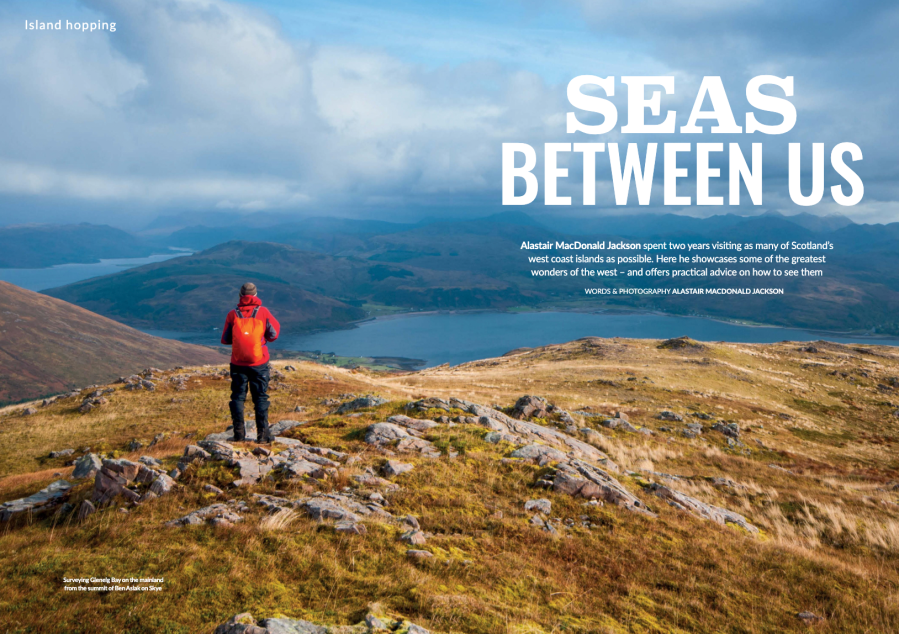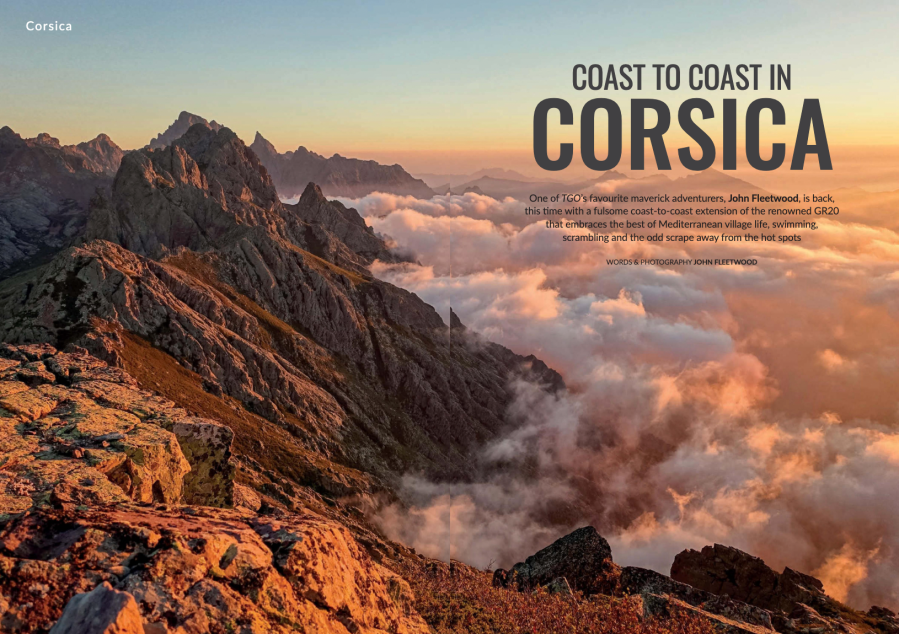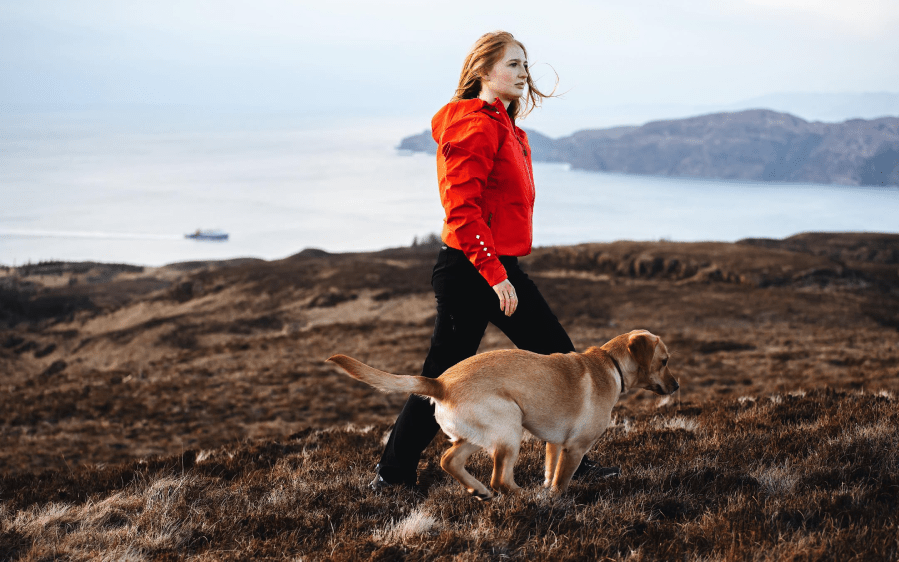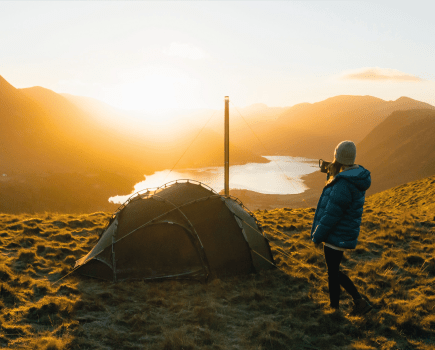Main image: Walking with Feorlinn the Lab on Mull, one of Britain’s wild isles | Credit: Eilidh Cameron
Even in the adult mind, every island is Neverland. But did you know there are too many islands in the UK to count? Estimates range between 4000 and 6000, but only 803 are big enough to warrant mapped coastlines. Of these, a handful have such superlative walking opportunities, they must be worth swallowing down a few anti-nausea tablets before a ferry crossing. So, which of Britain’s wild isles to pick?
From the Scottish isles to the Channel islands, consider this issue a guide to your next Neverland. You’ll be surprised by how close to home you can stumble upon paradise by sailing off to an adventure island.
Highlights of this issue:
- Hanna Lindon rounds up the best British islands on which to find Neverland
- Helen Iles returns to Ynys Enlli to volunteer alongside an unchanged North Walian island community
- Island-bagger Alastair MacDonald Jackson shares advice on Scottish island hopping this Summer
- Maverick explorer John Fleetwood crosses Corsica on a sublime reimagined sea-to-summit GR20
- Alex and Hannah Roddie share their hard-won tips on overcoming your fear of heights
- Put these to good use on our scrambling routes perfect for adrenaline-fuelled dry days
- In our new nature column, Nadia Shaikh visits the humble hedgerow in all its glory
PLUS: Jim Perrin paints a portrait of Ben More; Eilidh Cameron escapes to the Isle of Lewis; honest and trusted reviews of the best budget tents and sleeping bags – as well as top-of-the-range big packs; the latest news from the mountains and the Right to Roam campaign; outdoor walking festivals we rate; and our reviews of new outdoor books to inspire.
Stories from Britain’s wild isles and beyond:

Islands in the Stream: From gnarly ridge traverses to relaxing strolls along silvery beaches, these island hikes lend themselves to the long days of summer.
“The Scilly Isles are tropical, sand-fringed proof that you don’t need crazy contours for a great island adventure. They lounge in startlingly blue seas a three-hour ferry ride from the Cornish mainland – and, as you might well gather from the waving palm trees and the warm microclimate, they represent the UK’s most southerly point. Scilly is a walkers’ dream, partly because its islands are mostly car free. St Mary’s is the largest – and has its own beautiful coastal path – but St Martin’s (reached via inter-island boat from St Mary’s) is quieter and a magnet for amazing wildlife. The coast path is only 10km / 6 miles long, but it manages to squeeze plenty of splendour into a short distance. If the hike around St Martin’s leaves you feeling like you’re just getting started, then many of the larger Scilly Isles – including St Mary’s, Tresco, St Agnes and Bryher – have their own coastal routes. Why not link them up for a week of tropical, island-hopping hiking?”

Back to the Island: Photographer Helen Iles revisits Ynys Enlli for a few days of seal-watching and star-shooting. She finds much had been left unchanged on this ‘Island in the Currents’ as she volunteers to protect its ways from the wild elements that encircle it.
“A rough boat crossing and muddy walk brought me to the welcome shelter of Plas Bach. In the storm, the roof, the floorboards, the walls, the windows and the gaps in between all howled. I dozed off and on, very grateful for the shelter of the old house. During the week we walked down to the Lighthouse and watched as the huge seas pounded the shore. Seals move off the beach as the tide squeezed the island. They lumbered up onto the grass and re-powered in the sunshine. Gulls soared while the stopper waves crested and fell on the spot. Foam stirred up by the turbulent seas wobbled like blancmange. The house was a calm oasis, it creaked, flaked and blistered from the onslaught of the sea. It hummed in the wind…”

Seas between us: Alastair MacDonald spent two years trying to visit as many of Scotland’s west coast islands as possible. Here he showcases some of the greatest wonders of the west – and offers practical advice on how to see them.
“Even as a seasoned hillwalker, it’s easy to be caught out by the remoteness of some of the islands. On Jura, for instance, I’d planned to spend the night at the bealach between two of the Paps of Jura and climb them in the morning before working my way back to the ferry via another overnight stop at Craighouse. I had decided to pack an old bivvy bag rather than a tent to cut down on weight. It was high summer – what could possibly go wrong? Well, after alighting from the boat at Feolin, I set off on the 10km hike up to my overnight spot. It was a challenging climb, and I was mightily relieved to eventually roll my rucksack off and tuck into the pasta I had made the previous night. After about an hour of sitting there, I became aware that there wasn’t a single bit of human habitation to be seen. There was no sound either, apart from the melancholy calling of deer. I was bang in the middle of the southern part of the island – it was an odd feeling to know that there were six miles of rough walking in either direction to reach the coast…”

Coast to Coast: One of TGO’s favourite maverick adventurers, John Fleetwood, is back with a coast-to-coast extension of the renowned GR20, stretched out to embrace the best of Mediterranean village life, swimming, scrambling and the odd scrape away from the hotspots.
“The following day dawned bright, if windy. The jellyfish sting had subsided a little as had the stinging in my big toe where the sea urchin spines had been implanted. I set out with a spring in my step and an excited expectation for what might unfold. The first stage of the traverse follows the Sentier des Douaniers – a path used by customs officials to seek out smugglers. It follows a rugged coastline, replete with Genoese watchtowers built to protect local communities from raiding pirates. The strong wind whipped up the sea and imparted a real energy to the day. The route takes you to the Northernmost point of Corsica and to the extremity of the long finger of the Cap Corse that sticks out into the Mediterranean Sea. As a result, it is very exposed to the wind, which when combined with a strong sun, made the experience quite ‘magnifique’. All thoughts of entering the water had long since been banished by the sight of large waves…”
Order a single copy of this issue, our special on Britain’s wild isles.








